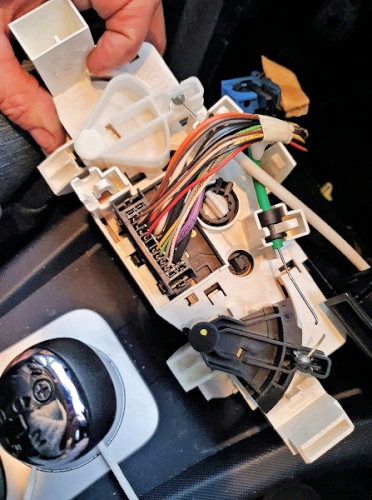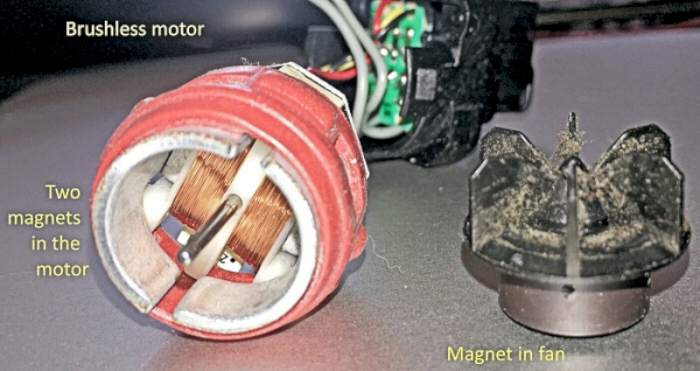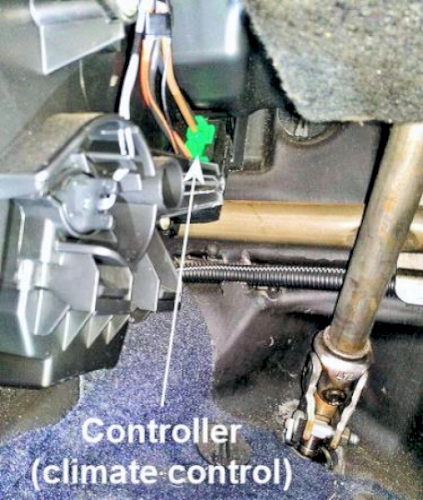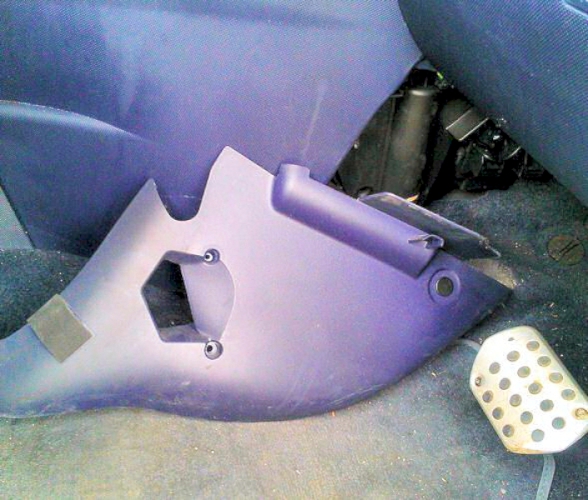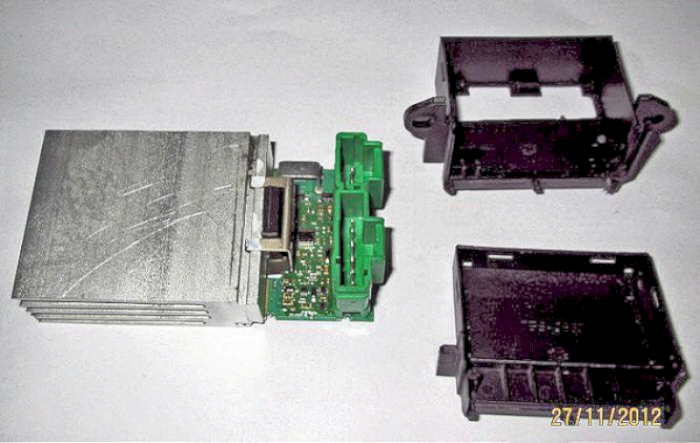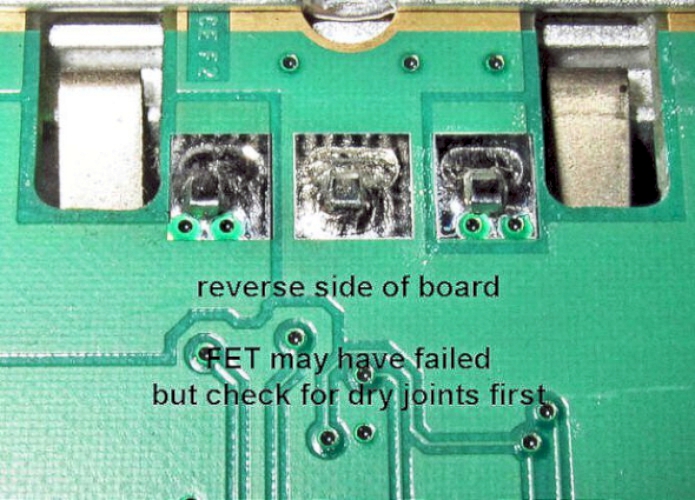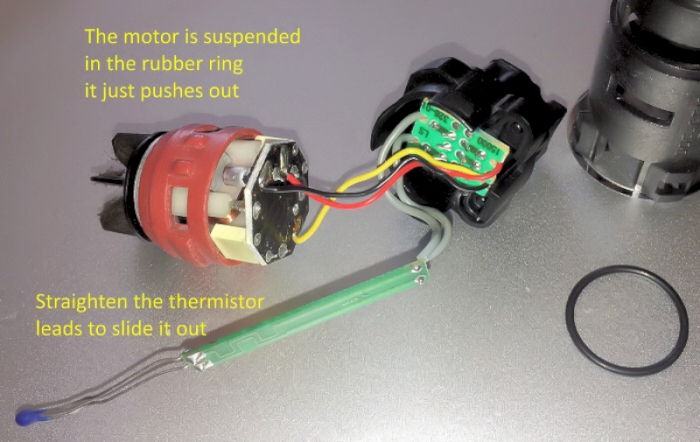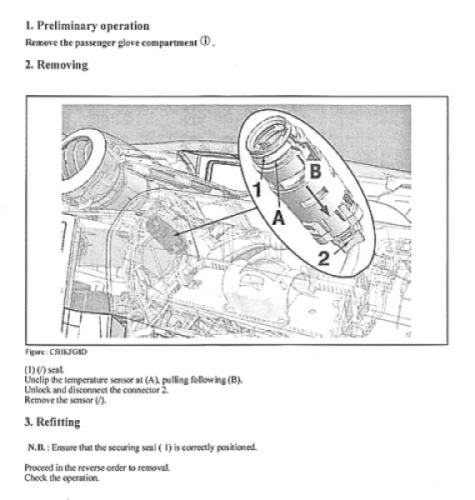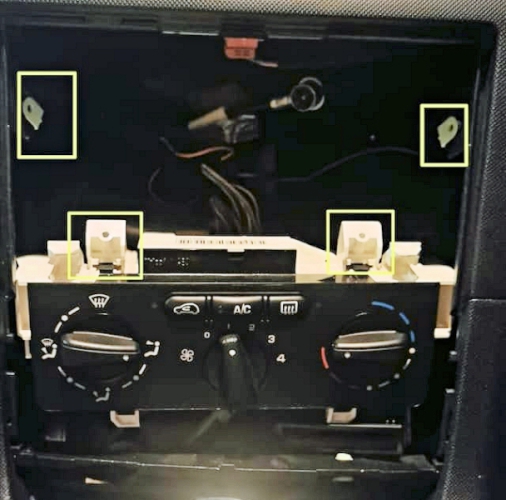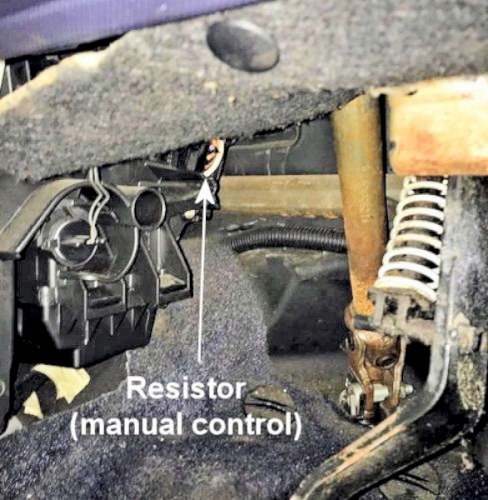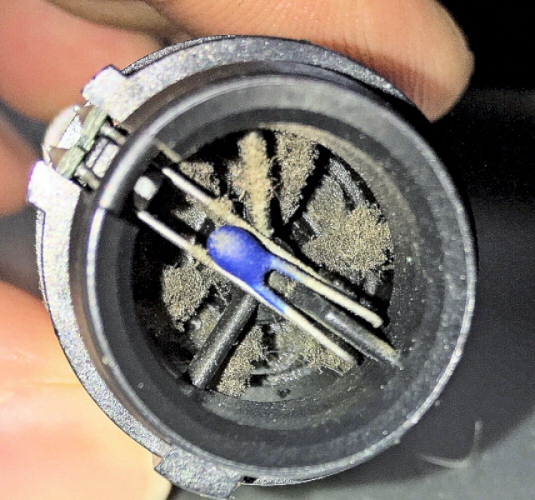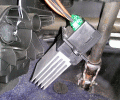
Heater Fan Control

The digital control panel on some 1007's is controlled via a small probe mounted in the dashboard behind the small vent. A small fan inside sucks a sample of the air from the cabin to maintain a steady temperature in the car.
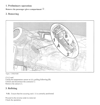
The small fan inside the probe can start to sqeak. Remove as a unit from behind the dashboard after removing the glove locker. Clean and use thin oil on the bearings and reassemble
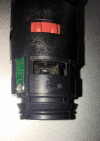
This is the little unit with a centrifugal fan to suck air in over the thermistor which controls the heating.
Peugeot part number for the temperature probe is 6445HT

The parts inside. You could leave the thermistor in situ as the motor will slide in and out without removing it. Since the motor is not positively retained, you can gently push it out with a screwdriver from the fan end. Easing the rubber lobes out of the slots will reduce the likelihood of damage.

It is a brushless motor, so you can't just stick 12V across it to make it spin. It's like a stepper motor and needs signals driving the two coils out of phase.
Photos and commentary by PAul Maskens
Heater fan stuck on high speed or not working

Cars with manual air conditioning have a resistor to control the fan speed. The normal symptom is the fan only working when the switch is set to max
Cars with climate control have a control unit (sometimes called a "resistor" when buying off ebay) The normal symptom is the fan control having no effect and the fan runs either at full speed or not at all.
Climate Control

Cars with auto air conditioning unit (climate control) may find that, whatever the settings are, the fan is always on (sometimes always off) irrespective of the fan setting. This can be cured by replacing the failed fan control unit that sits in the side of the heater.
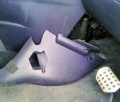
To replace the fan motor control unit takes about 10 mins (in theory). The only tool needed is a T20 torx screwdriver.
Remove the right-hand covering panel (drivers side on right-hand drive cars)

Cost of unit from Peugeot £130, off ebay £20. The unit is on the drivers side slotted into the side of the heater

The FET can fail either open-circuit or short-circuit - but reflow the solder connections on the other side of the board first just in case
I changed my heater controller as the original went open circuit so no fan (odd that the known faulty spare I had was short circuit so full fan).
Job seems quite straightforward except that the plug/sockets are in VERY tight and the new cheapo Chinese sockets needed a little chamfering to get the plugs in as they are such a tight fit
. . . and refitting the little cover panel is an art in itself - took me much longer than the allotted ten minutes!
but a satisfactory outcome . . . eventually
Manual Control
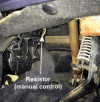
Cars with manual air conditioning unit may find that, whatever the settings are, the fan only runs with the switch at full speed.

As above - remove the right-hand covering panel (drivers side on right-hand drive cars) to replace the failed fan resistor unit that sits in the right side of the heater.
The lamps behind the manual air conditioning switches and the heater control wire can fail

To remove the manual control panel, you will have to remove the radio first. Then 6 torx screws: two either side of the revealed enclosure, two in the middle and two underneath the whole fascia.
Remove all six, and pull the panel out.
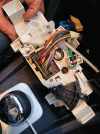
Remove the piece of plastic holding the bulbs. It’s easier to get them using long narrow pliers (just twist). There are two bulbs that need to be replaced, type: T5 12V 1.2W (B8.5D).
Video showing how to replace the bulbs in a similar Peugeot (not 1007)
If the heater control wire is broken, repair or replace
also be aware that the plug into the top of the fan - accessible by removing the left hand glovebox - can come loose. The power cables to the blower motor can overheat at the connector and go open-circuit. Pull them out and solder two thick power lines to bypass the connector should solve this.
It has also been noted that the heater resistor can develop bad contacts due to arcing caused by heavy currents during switching.
